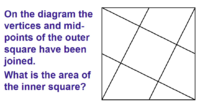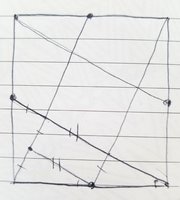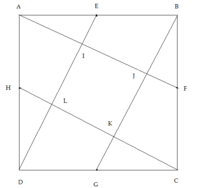
Can anyone help with this problem? I have found an approach and got an answer which i have checked and it is correct but i wonder if there are other approaches? My method involved just geometric arguments but i am not fully convinced i can conclude what 'looks' to be the case as fact. I will explain what i mean with a spoiler below. But please ignore before you have looked at it for yourself please.
SPOILER DOWN BELOW...
.
.
.
.
.
.
.
.
.
SPOILER...
Looking at the picture it appears that a trapezium and a triangle can be rearranged to make the same as the inner square. This means that there are 5 inner squares. So the inner square is a 1/5 of the whole bigger square.



